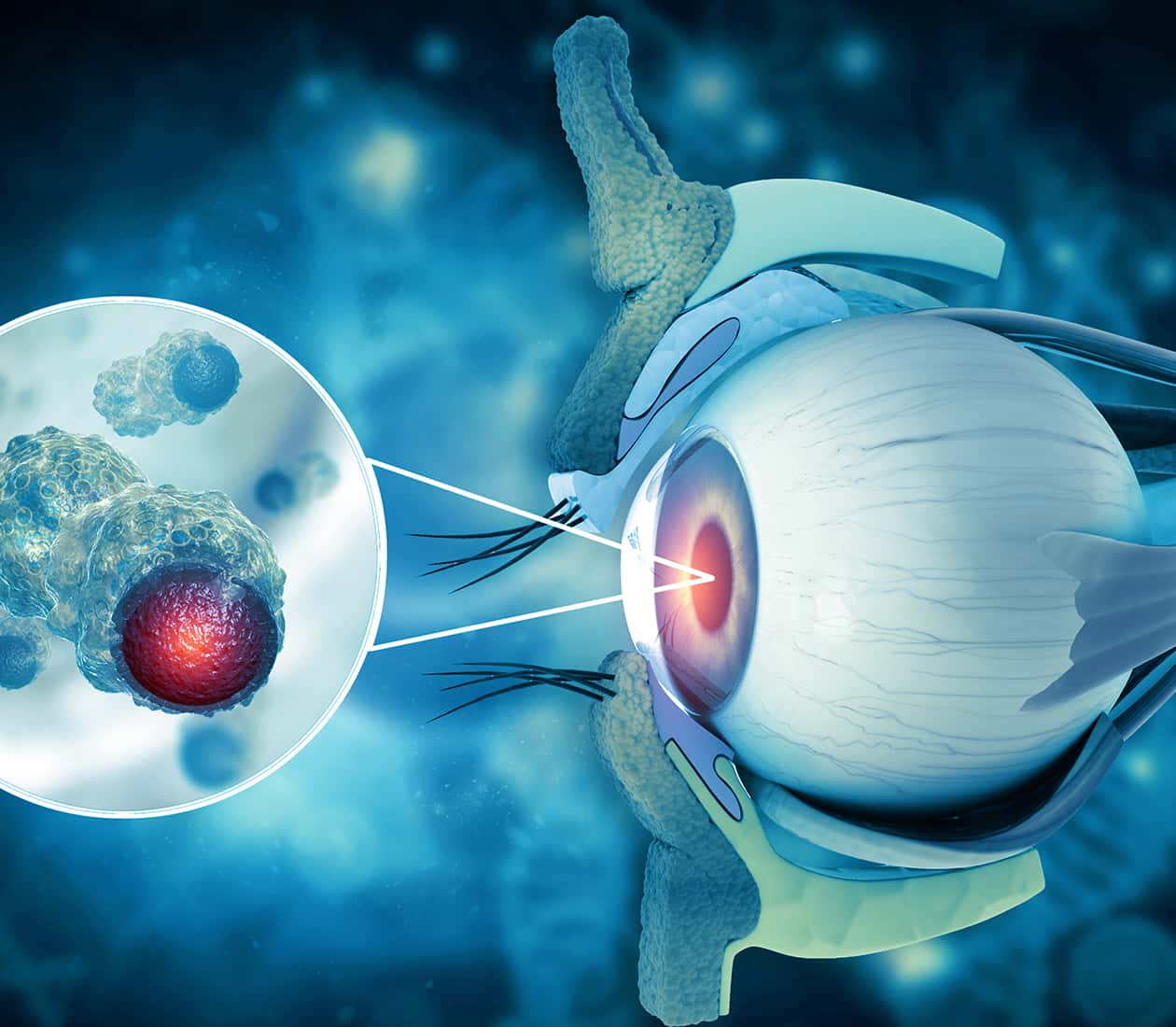
The Intraocular Melanoma Program at Cleveland Clinic Abu Dhabi provides specialized care and support for people diagnosed with Intraocular Melanoma.
The Intraocular Melanoma Program at Cleveland Clinic Abu Dhabi provides specialized care and support for people diagnosed with Intraocular Melanoma. Intraocular melanoma is the most common form of eye cancer in adults. It affects the uvea (the middle part of the eye). It can lead to vision loss and changes in eye color or shape. Intraocular melanoma can spread to other parts of the body, particularly the liver. Treatments include surgery and radiation therapy. Experience in the diagnosis of eye cancers, and an understanding of how to treat them, is key to receiving the best possible outcome.

The multidisciplinary team at Cleveland Clinic Abu Dhabi’s Intraocular Melanoma Program are highly trained in the structure and function of the eye. Our ophthalmologists and optometrists offer state of the art diagnostic and treatment options for a range of complex eye conditions and disorders, including intraocular melanoma.
We offer every patient a dedicated team of medical experts to support them, and their family, throughout their cancer journey. The multidisciplinary meet daily to discuss each patient’s needs, their progress and to decide the best treatment plan.

Intraocular melanoma is a rare cancer, which affects the middle part of the eyeball (called the uvea). It causes the melanocytes (the cells which produce pigment/color) to grow out of control. The cancer can lead to changes in vision or vision loss.
It can form within the iris (the colored part of the eye), the ciliary body (the muscle fibers behind the iris) or the choroid (the tissue within the eyes blood vessels).
Intraocular usually starts in the choroid and can metastasize (spread) from the uvea to other parts of the body, usually the liver.

Intraocular melanoma often has no symptoms. If intraocular melanoma has developed in a part of the eye that isn’t visible, then symptoms may not be noticed, but they do occur, they include:
Some vision loss is common with intraocular melanoma, but the amount of vision loss depends on the size of the melanoma and how long you have had it. Long-term melanomas may cause complete vision loss.
Intraocular melanoma is caused by a mutated gene which causes melanocytes within the eye to grow and mutate, leading to tumors. You are at an increased risk of the disease if:

Your doctors will first evaluate your symptoms and medical history if eye cancer is suspected. An eye exam will then be performed, during which your vision will be checked, and the inside of your eye – or its surrounding structures – are looked at closely. Your pupils may be dilated with special eye drops to help your doctor see the structures at the back of the eye.
Other diagnostic tests may include:
If cancer is detected, further diagnostic tests may be performed to stage the cancer.
If a small intraocular melanoma is found, that isn’t impairing your vision, it is sometimes monitored before treatment is recommended. If treatment is needed, it will depend on the tumor’s location, size, and whether it has spread.

Most of the factors that put you at risk of intraocular melanoma (age, race) cannot be controlled.
Frequent eye examinations with an ophthalmologist are the best thing you can do to protect your eyes, and always have any symptoms checked out immediately.

Our Intraocular Melanoma Program doctors have extensive expertise in the field of cancer and eye disorders. The team provides excellent, Patients First medical care based on current US and international guidelines. Caregivers involved in patient care for this program include:

Speak with our Contact Center for assistance
Request an Appointment 800 8 2223 International Patients